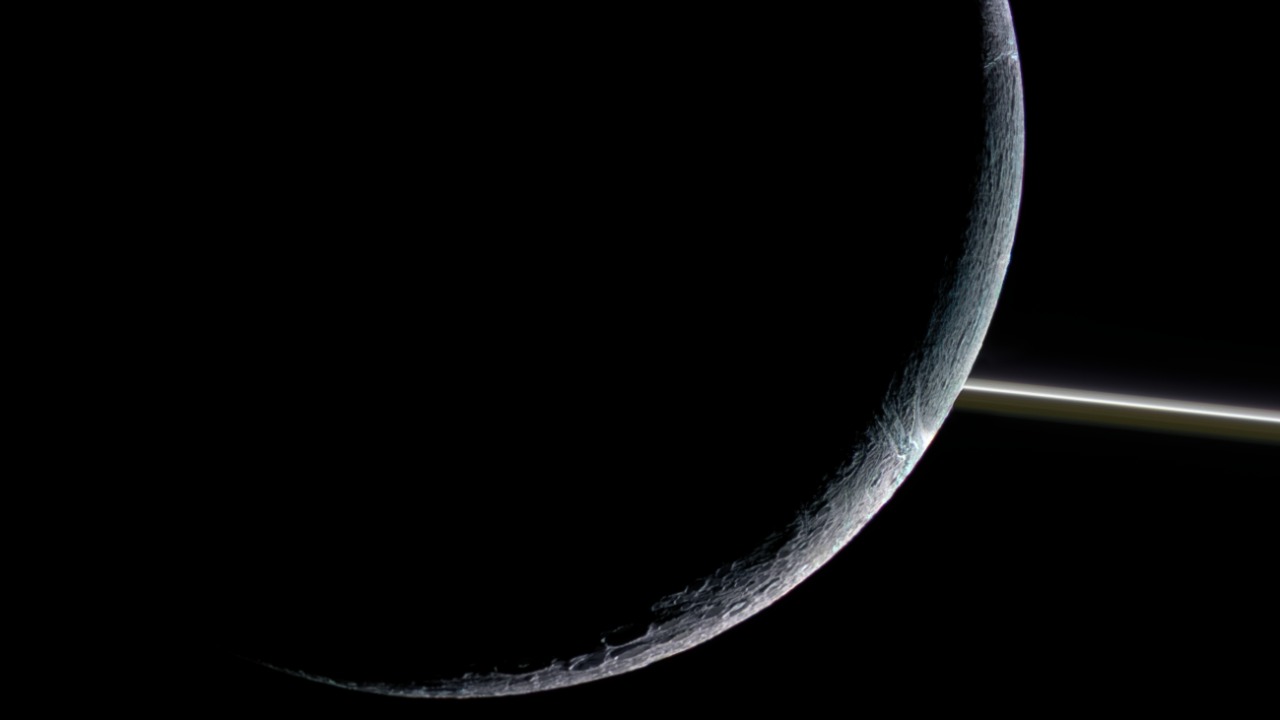
Recent scientific findings have identified a warm ocean beneath the icy surface of Saturn’s moon, Enceladus. This ocean may offer the perfect conditions for life to emerge, with heat signatures detected emanating from the moon’s interior. Building on prior evidence of an underground ocean, it is possible that alien life may have developed there since the moon’s formation.
Discovery of the Subsurface Ocean
The initial detection of a warm ocean on Enceladus, one of Saturn’s icy moons, has sparked significant interest in the scientific community. This ocean, located beneath the moon’s surface, was confirmed through recent scientific observations. The ocean’s warmth, as reported in 2025 studies, suggests that its potential habitability does not rely solely on surface ice.
Further research has provided insights into the ocean’s likely composition and depth. Evidence from 2024 solidified the presence of a global subsurface body of water, indicating a vast and potentially life-supporting environment beneath the moon’s icy exterior.
Heat Signatures from Enceladus
Scientists have detected heat emanating from Enceladus, providing compelling evidence of active geological processes beneath the moon’s icy surface. Infrared and thermal data collected in November 2025 suggest an ongoing energy transfer from the moon’s core to the ocean, a process vital for maintaining liquid water.
This heat also has implications for Enceladus’s cryovolcanic activity, such as geysers. These geysers provide direct samples of the subsurface environment, offering invaluable insights into the conditions beneath the moon’s surface.
Conditions Balancing Life Potential
The warm ocean beneath Enceladus’s surface may possess a chemical and thermal balance capable of supporting microbial life. The detection of necessary elements like water, energy, and organics, combined with the ocean’s warmth, creates stable temperatures far from Saturn’s cold exterior.
Furthermore, the presence of hydrothermal vents or similar features, inferred from heat data, mirrors Earth’s deep-sea environments conducive to life. These conditions suggest that Enceladus’s ocean could be a prime location for the emergence of life.
Timeline of Enceladus Research
Research into Enceladus’s potential for life began in earnest with the 2017 findings that the moon hides an ocean. Estimates place the ocean’s age at hundreds of millions to billions of years old, providing ample time for life to potentially develop.
Advancements in 2024 confirmed the existence of an underground ocean on the icy moon, building on data from the Cassini mission in the 2000s. The recent 2025 discoveries of warmth and heat further our understanding of the moon’s interior, suggesting extended periods for prebiotic chemistry.
Implications for Alien Life on Enceladus
The warm ocean on Enceladus may harbor alien life, with billions of years providing ample time for evolutionary processes to occur. The balance of factors like salinity, pH, and nutrients in the ocean, as suggested by heat and plume analyses from 2025, could support the existence of simple organisms.
These organisms could thrive in this environment, drawing parallels to extremophiles on Earth. However, it is important to note that this does not necessarily indicate the presence of complex life forms.
Future Exploration and Challenges
Upcoming missions, such as sample return from Enceladus’s geysers, could directly test the ocean’s habitability based on current heat and warmth evidence. However, observational challenges persist, including the thick ice shell obscuring the ocean. Advanced telescopes and other technologies developed in 2025 are helping to overcome these obstacles.
Enceladus’s confirmed underground ocean and recent vital signs position it as a prime target in the broader search for life in the solar system. The moon’s potential for life, combined with its unique geological activity, make it a fascinating subject for future exploration and study.
More from MorningOverview